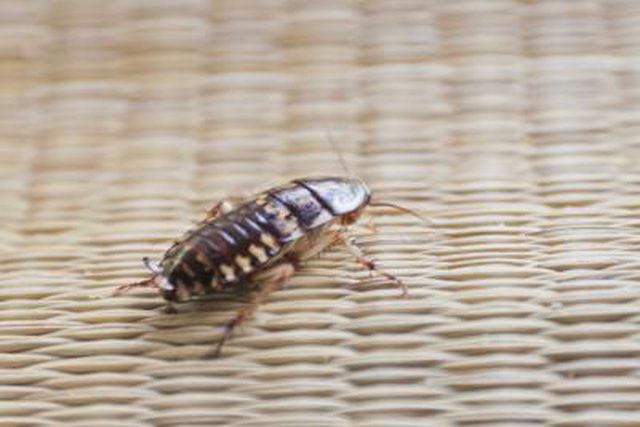Bulbs
Flower Basics
Flower Beds & Specialty Gardens
Flower Garden
Garden Furniture
Garden Gnomes
Garden Seeds
Garden Sheds
Garden Statues
Garden Tools & Supplies
Gardening Basics
Green & Organic
Groundcovers & Vines
Growing Annuals
Growing Basil
Growing Beans
Growing Berries
Growing Blueberries
Growing Cactus
Growing Corn
Growing Cotton
Growing Edibles
Growing Flowers
Growing Garlic
Growing Grapes
Growing Grass
Growing Herbs
Growing Jasmine
Growing Mint
Growing Mushrooms
Orchids
Growing Peanuts
Growing Perennials
Growing Plants
Growing Rosemary
Growing Roses
Growing Strawberries
Growing Sunflowers
Growing Thyme
Growing Tomatoes
Growing Tulips
Growing Vegetables
Herb Basics
Herb Garden
Indoor Growing
Landscaping Basics
Landscaping Patios
Landscaping Plants
Landscaping Shrubs
Landscaping Trees
Landscaping Walks & Pathways
Lawn Basics
Lawn Maintenance
Lawn Mowers
Lawn Ornaments
Lawn Planting
Lawn Tools
Outdoor Growing
Overall Landscape Planning
Pests, Weeds & Problems
Plant Basics
Rock Garden
Rose Garden
Shrubs
Soil
Specialty Gardens
Trees
Vegetable Garden
Yard Maintenance
About Tree Roaches
About Tree Roaches. Whether you call them water bugs, croton bugs or palmetto bugs, roaches are flat, fast moving insects that belong to the Dictyoptera order. Typically reddish-brown to black in color, roaches often infest areas with favorable living conditions. Some roach species are considered beneficial because they prefer living outdoors in...

Whether you call them water bugs, croton bugs or palmetto bugs, roaches are flat, fast moving insects that belong to the Dictyoptera order. Typically reddish-brown to black in color, roaches often infest areas with favorable living conditions. Some roach species are considered beneficial because they prefer living outdoors in tree holes or other plant matter, where they feed on decaying or dead vegetation and animals. Even these tree roaches can become a nuisance and need treatment if they invade your garden, lawn or home in search of food or water.
Types of Tree Roaches
Most tree roaches are peridomestic, which means they can survive both outdoors and indoors. The smokybrown cockroach (Periplaneta fuliginosa), the American cockroach (Periplaneta americana) and the oriental cockroach (Blatta orientalis) all fall into this category. These roaches live and breed in dark, moist areas, such as tree holes, flower beds, mulch, woodpiles, water meter boxes and planter boxes. Although they prefer living outdoors, peridomestic cockroaches often migrate inside while looking for something to eat or drink. Another type of roach, the wood cockroach (Parcoblatta spp.), is an outdoor species that prefers living in moist wooded areas with an abundance of leaf litter. Mature wood roaches only reach about 3/4 to 1 inch in length, while peridomestic roach species usually range from 1 1/2 to 1 3/4 inches long.
Nonchemical Control Methods
Preventing access to water, food and shelter is the best way to control tree roach populations. Check sprinklers and faucets for leaks and drips, tightening any loose pipes or replacing washers, if necessary. Eliminate areas where water collects, such as old tires, buckets or tree holes, and don't leave water and food bowls outside overnight. Keep garbage in sealed trash bags and place inside garbage cans with tight-fitting lids. Raking leaves, removing plant debris and picking up garbage from your garden and lawn eliminate potential food sources and hiding places. Help prevent an indoor invasion by keeping mulching material at least 12 inches away from your home's foundation and pruning away any tree branches or shrubs that touch your house. Regularly check weather stripping and seals around doors, windows and attic vents, caulking any gaps or cracks you discover.
Outdoor Chemical Treatments
Granular baits and bait stations typically work well to control outdoor roach populations. Following the instructions on the product's label, spread a granular bait in mulched areas and around your plants. One product suggests using 2 to 4 tablespoons of granules for every 100 square feet of treatment area. Use a duster or a hand shaker to apply a 1- to 3-foot-wide band around the perimeter of your home. Don't water granular baits into the soil. Place ready-to-use bait stations around planters or in water meter boxes so the pests encounter the stations while foraging. Carefully read and follow the manufacturer's directions because instructions vary. One product recommends using four to six stations for every 100 square feet of treatment area. Check the bait stations regularly and replace when needed for continuous tree roach control.
Indoor Control Methods
Despite your best efforts, tree roaches might manage to make their way inside your home. Prevent them from staying by depriving them of food and water. Keep garbage and food products in tightly sealed containers. Clean up any spills and crumbs promptly and don't leave water standing in the sink. Placing ready-to-use bait stations in corners, under sinks and in other areas out of reach of pets and children will help reduce roach populations for two to three months, but be sure to follow label instructions.
A Few Considerations
Roach bait chemicals can be toxic to birds and fish, so avoid sprinkling granules and placing stations directly next to a water source. Avoid contact with skin and eyes by wearing long sleeves, pants, shoes with socks, latex gloves and protective eyewear. Wrap used bait stations in a plastic baggie and place them in a covered trash can. Don't use any bait products in areas where children or pets roam. Avoid using broad-spectrum insecticides outdoors or you risk killing the beneficial insects along with the tree roaches. Natural roach predators include parasitic wasps, spiders, centipedes, beetles and ants. Birds, frogs and toads feed on cockroaches as well. Placing birdhouses, bird feeders and toad houses around your landscape helps attract those predators and keeps roach populations in check.